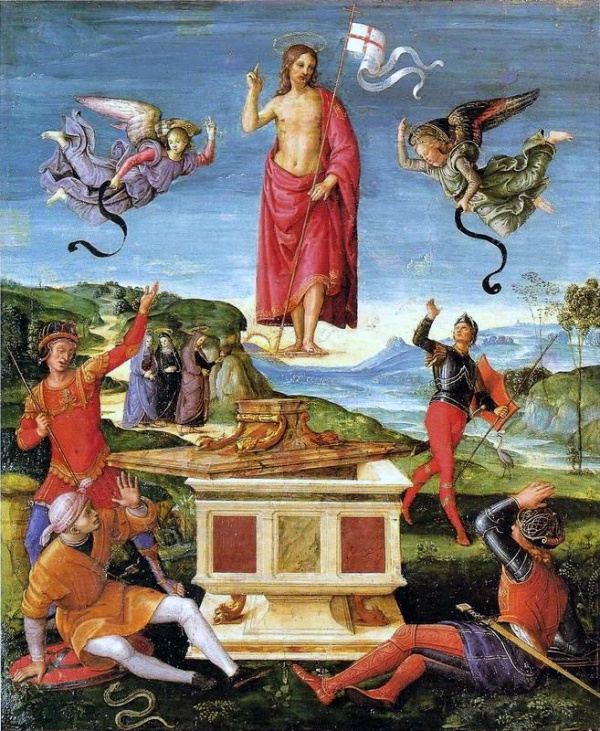Facts About Resurrection of Christ
"The Resurrection of Christ" often referred to as "The Kinnaird Resurrection" is an early masterpiece by Raphael, one of the luminaries of the Italian High Renaissance. Painted between 1499 and 1502, this artwork was potentially part of a predella—a series of small paintings beneath a larger altarpiece—or possibly connected to the Baronci altarpiece, Raphael's first known commission. Today, you can admire this piece at the São Paulo Museum of Art.
In "The Kinnaird Resurrection" Raphael’s talent for dramatic composition is evident, distinguishing his style from that of his mentor, Pietro Perugino, who preferred a more serene and poetic approach. Raphael’s astute use of geometry unifies all elements of the scene, creating a lively rhythm and ensuring that each character plays an essential role in the narrative. His work also shows the influence of artists like Pinturicchio and Melozzo da Forlì, reflecting the vibrant artistic climate of 16th-century Florence.
The painting arrived at the São Paulo Museum of Art in 1954. Initially, there was some debate about its authenticity as a work by Raphael. However, based on preparatory sketches and expert evaluations, it is now widely accepted as an authentic Raphael. This recognition adds to its significance, as it remains the only Raphael painting in the Southern Hemisphere.

 Venezuela
Venezuela